A Trip to the Kabuki-Za Theater
Japan’s most famous cultural offering, Kabuki, is not an art form meant to cater to Western tastes. The performances can last all day long. The acting, done exclusively by men, is second-fiddle to the make-up and costumes. Monologues go on interminably. The music is strange and the dialogue is usually recited in an exaggeratedly affected, chiming manner. There is no earthly reason why Jürgen and I should have enjoyed it. But we did.
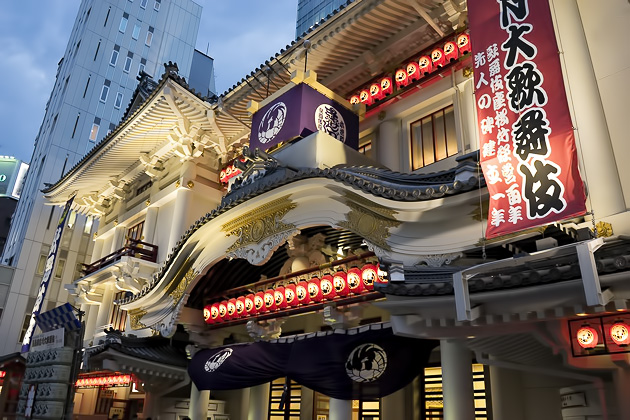
Kabuki emerged in the 1600s, and was originally performed entirely by women. These were often courtesans who might be purchased, and the shows were suggestive and bawdy. Kabuki was a natural fit in the red light districts of Tokyo, and drew audiences of every social class. Hoping to curb prostitution, women were eventually banned from performing, and acting duties were handed over to young boys… which did exactly nothing to curb prostitution. Performances were often interrupted by fighting in the audience over the affections of the most attractive young lads.
Soon enough, Kabuki acting became the exclusive domain of mature males, and the performances grew less ribald. It developed into an art form whose popularity spread like wildfire through Japan. Although the capital of Kabuki was undoubtedly the red light district of Yoshiwara (until the end of legalized prostitution in 1958), the most prominent theater has long been found in Ginza. The Kabuki-za was originally built in 1889, destroyed by fire in 1921, rebuilt in 1922, destroyed by the earthquake of 1923, rebuilt in 1924, destroyed by Allied bombing in 1945, rebuilt in 1950, destroyed in 2010 due to structural flaws, and rebuilt again in 2013. Phew.
So the theater has a history of 125 years, which just happens to be the exact length of a normal kabuki performance. These things are long, often lasting from the late morning until the evening. Mercifully, it’s possible to purchase tickets for a single act, which might be 90 minutes long. The procedure to buy single-act tickets is complicated but manageable. A good run-down can be found here.
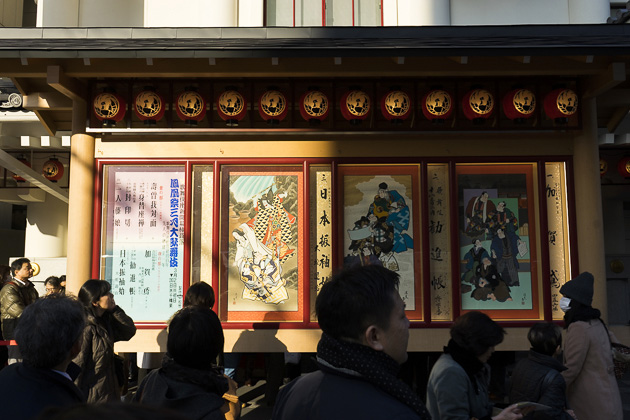
But don’t buy single-act tickets! We did so, and regretted the decision as soon as the show started. Kabuki is bizarre, indecipherable, tiring, silly, often boring, and utterly awesome. From the moment twenty ladies-in-waiting appeared on the stage, we were captivated. The play we were attending, Ichijo Okura Monogatari, dealt with the loyalties of a woman who had married into a rival clan, but the plot didn’t matter at all. This was about the acting, the make-up, the costumes and the set design. It was a lot of fun, and we were upset that we couldn’t stay for the subsequent acts.
Another problem with single-act tickets is that the seats are found way up at the top, in the theater’s worst section. From this height, you can’t see much of the detail in the actors’ expressions, nor the intricacy of their dress.
I didn’t expect to enjoy Kabuki anywhere near as much as I did. It’s hard to describe what’s so great about it… and when I try explaining it to friends, they look at me like I’m crazy. But I’m not crazy! Kabuki really is great, although you probably won’t believe that until you see it for yourself.
(Unfortunately, the Kabuki-za is very strict about their “no photography” rule, so we weren’t able to get any pictures of the performance itself. You’ll have to see it yourself!)
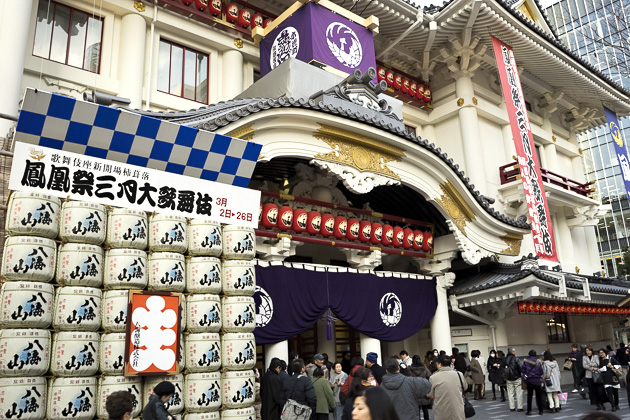
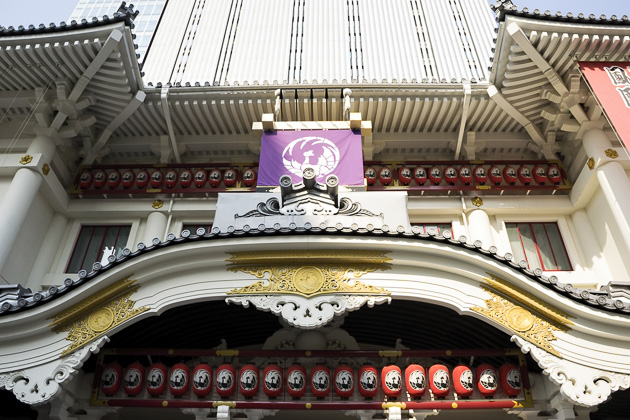
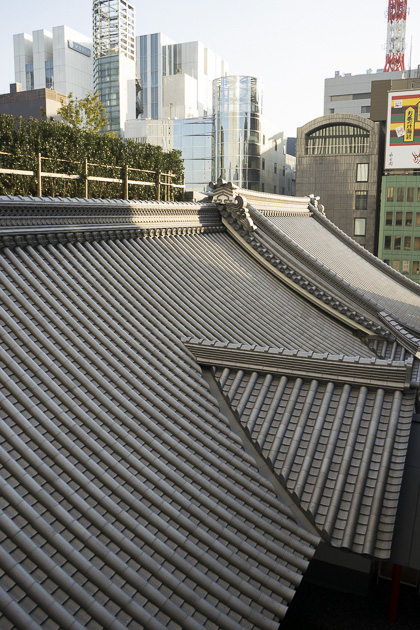

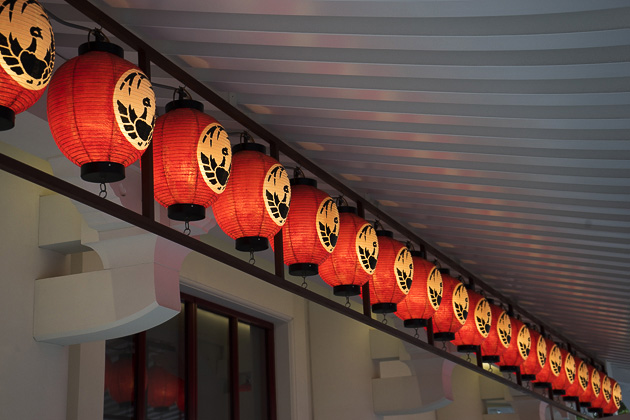




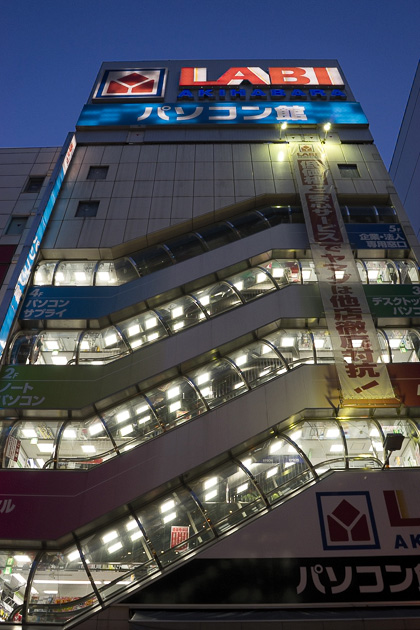
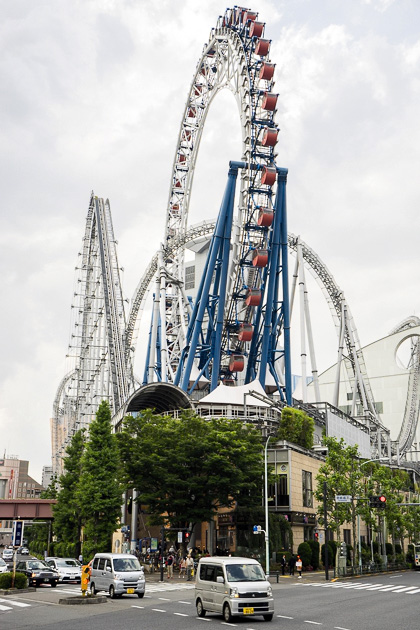
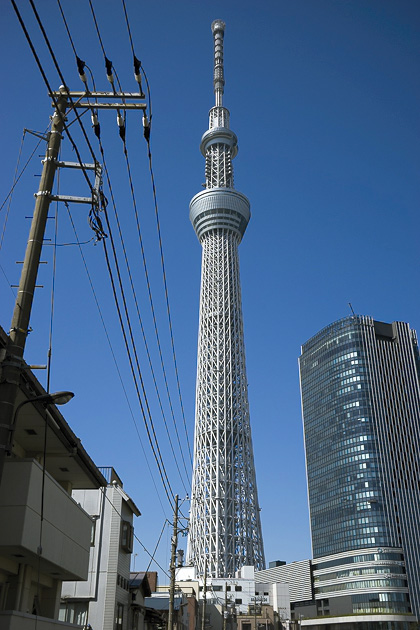

Pingback: Asakusa Amusements | For 91 Days in Tokyo – Travel Blog
Pingback: Sengaku-ji and the 47 Ronin | For 91 Days in Tokyo – Travel Blog